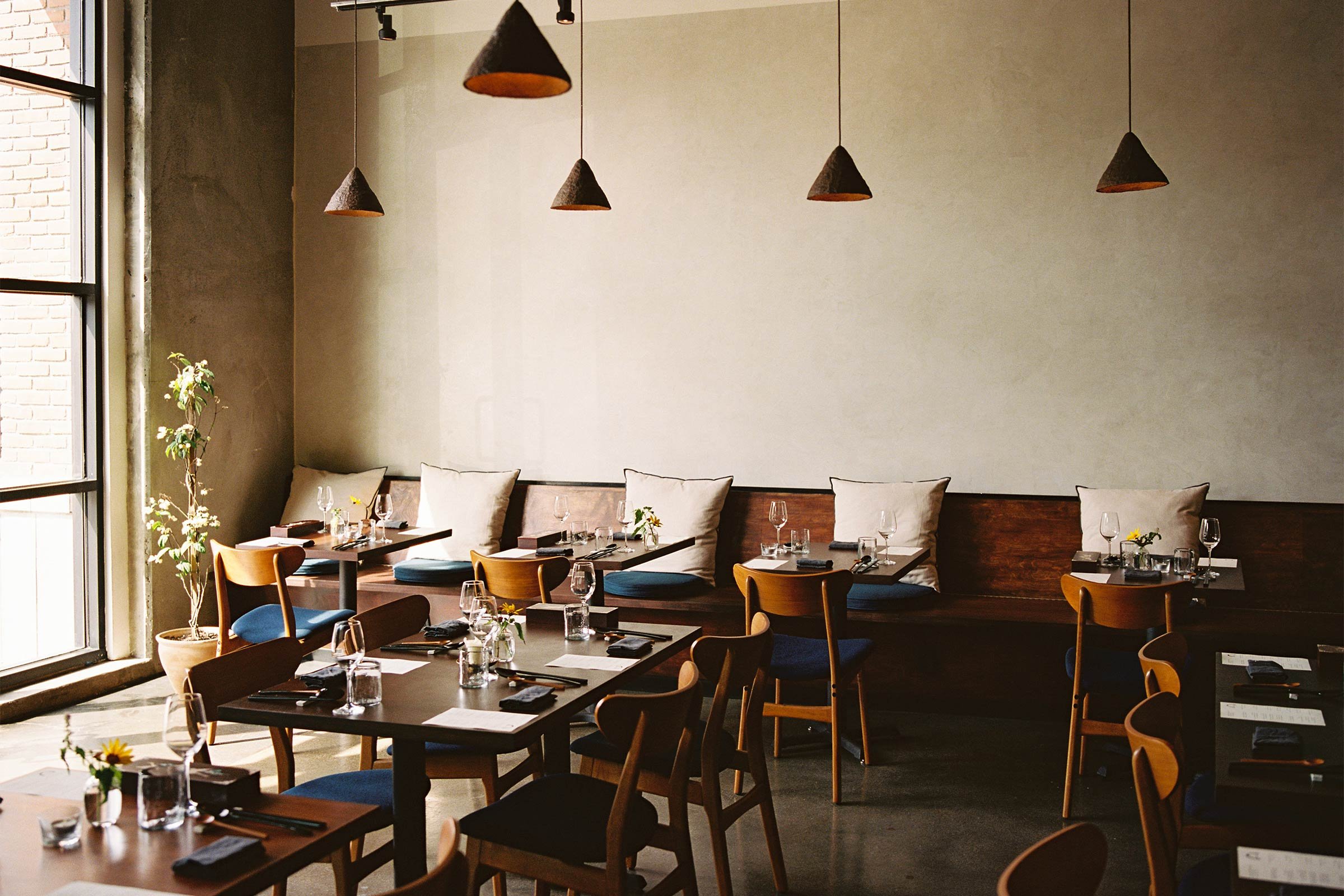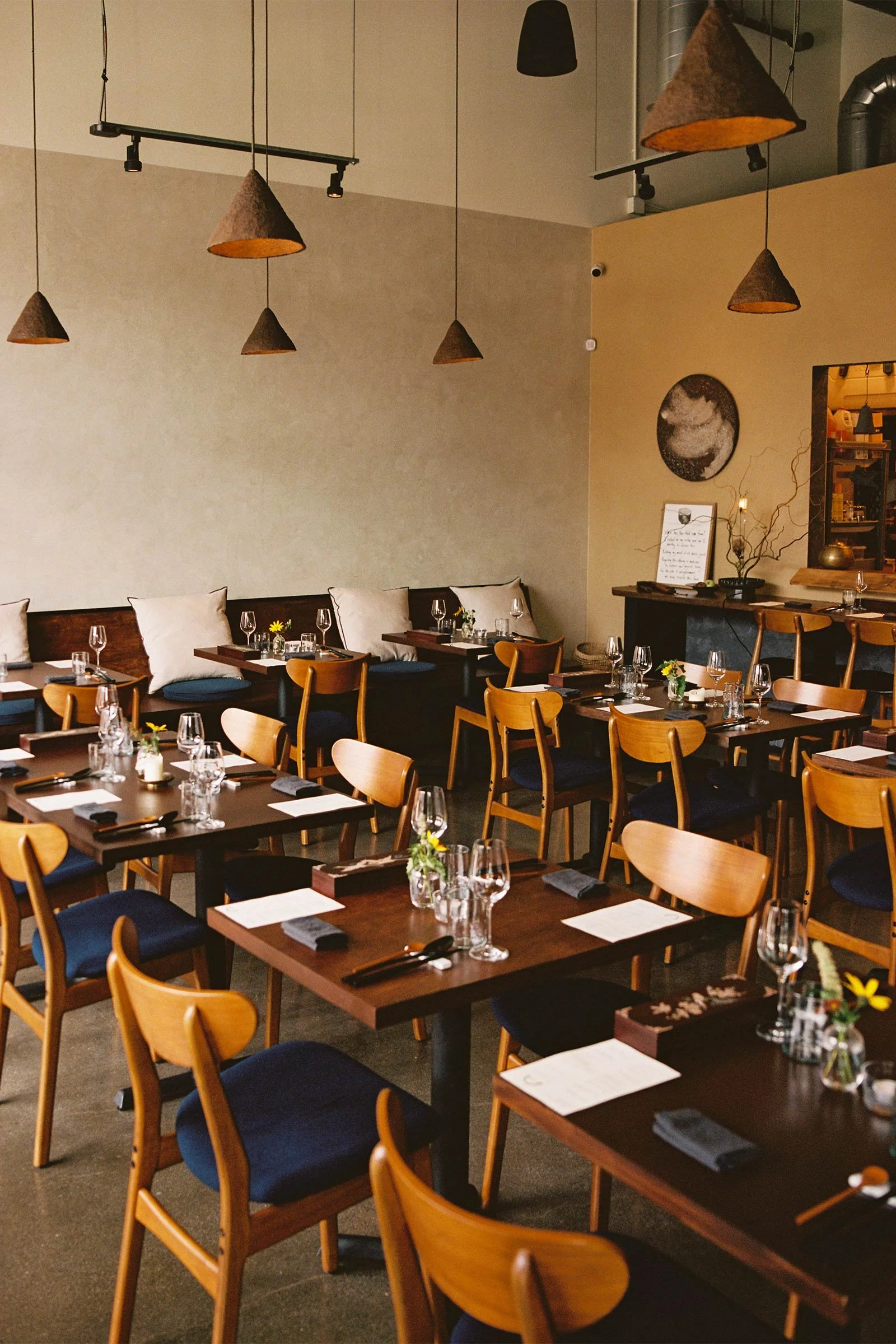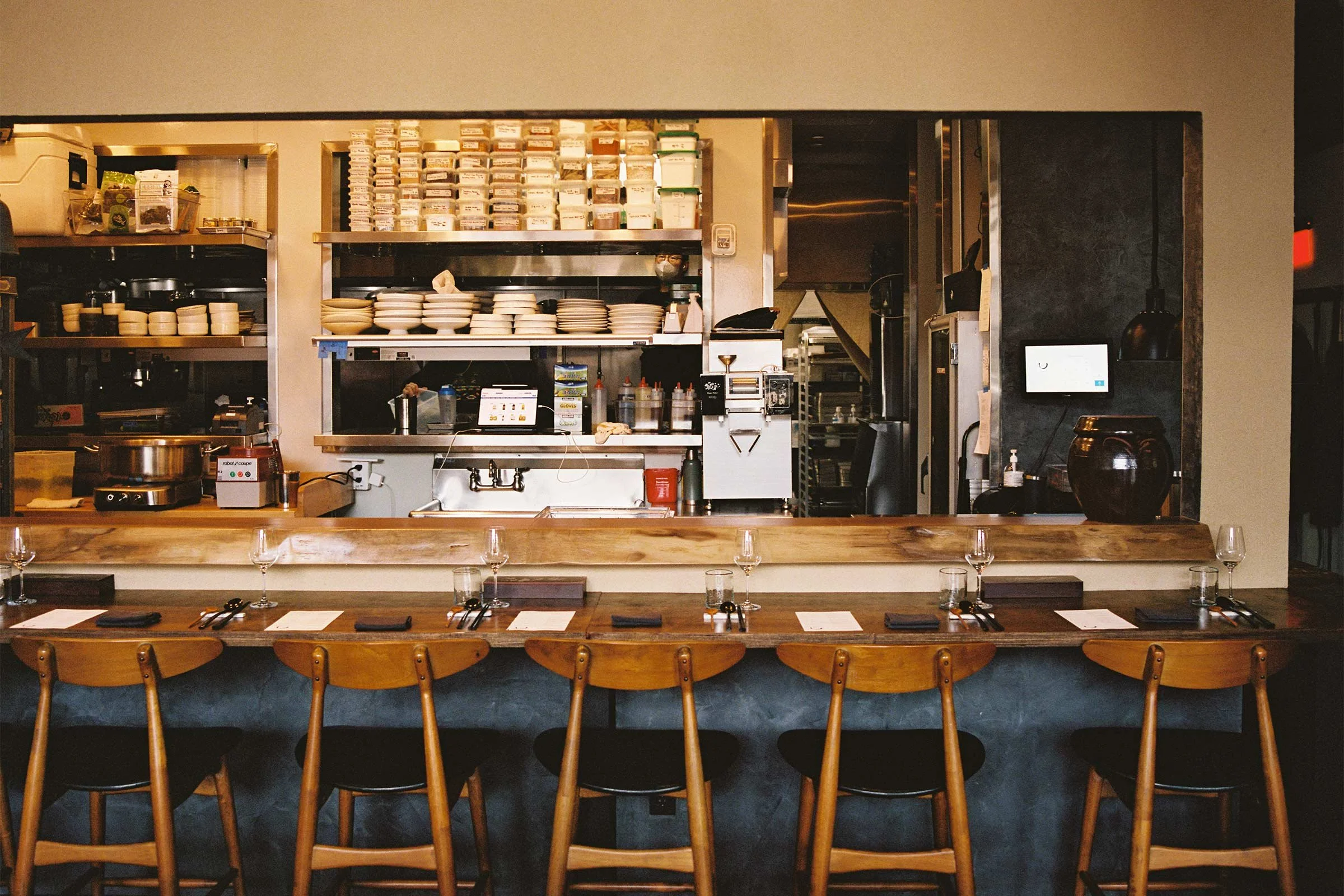Mina Park’s Baroo Reopens in LA
The Only Way Is Up (OWIU) designed the latest iteration of Mina Park’s Los Angeles restaurant Baroo, a space that nods to Korean traditions and reflects both the warmth of a ‘hanok’ and the dynamism of South Korea. Here studio founders Amanda Gunawan and Joel Wong tell us more
Design Anthology: How did you first meet the client?
Amanda Gunawan (AG): We have been fans of Baroo from the very beginning. It used to be located in this cute Spanish cafeteria and it’s come such a long way since, but what’s always consistent is that the food is always delicious! We would go there all the time and both Mina and Kwang, being the hands-on, hardworking duo they are, were always there. Eventually, they recognised that we were the ones ordering bowl after bowl three or four times a week and we became friends. They reached out to us when they were thinking of reopening Baroo, and of course we were honoured.
What was their brief to you for the project?
Joel Wong (JW): Mina wanted the space to reflect Baroo's food: Korean, simple, cosy and with plenty of depth to the flavours and techniques. Those were exactly the sentiments we wanted to mirror in the space. There were many technical components as well. One of the more unique requests was for a fermentation corner. We had a lot of fun researching this and taking inspiration from traditional Korean homes and how people would ferment and store in smaller spaces.
What’s great about the neighbourhood and what makes the location unique?
JW: The Arts District is one of the hippest neighbourhoods in Los Angeles at the moment because of its history and fast gentrification. We may be biased, but we'd like to think it's home to some of the best, most relevant restaurants in LA now.
How did you approach the project — what design references or narrative did you try to incorporate into the space?
AG: It was very important to us that the space reflected the food. Another thing that was important was for it to reflect Korean sensibilities, maintaining tradition while still being new and innovative. The whole space is therefore very craft-centric. We have an appreciation for craft in the same way that Mina and Kwang do, so we knew this would be a theme throughout the space. The whole restaurant is an homage to details, from the shikkui-plastered walls, art made from locally foraged clay and rocks, and lamps made out of seaweed, to the vintage teak armoire and the handmade planter we made to house Mina's tree.
Please tell us a little about the material choices.
JW: The colour and material selection was to be similar to that of a traditional Korean home, or hanok. We used plenty of walnut, including walnut-stained furniture pieces and a sustainably sourced walnut live-edge counter ledge, Japanese shikkui plaster and various colours of Venetian plaster. We maintained some of the existing industrial concrete finishes, and we also added some dark blue, Kwang's favourite colour!
Which of the elements are custom designed?
AG: The Seaweed lamps are from Tŷ Syml. Some of the elements are from our own ceramics line, OWIU Goods. The circular pendant above the chef's counter, which resembles the moon and is a nod to the importance of the lunar calendar in Korean culture, was made out of wild clay and rocks that our team foraged from California — again aligning with Baroo's style of cooking, which is heavily guided by fermentation. The large planter was hand-built by one of our talented ceramicists at OWIU Goods.
What other features are you most excited about?
We are excited about the chef’s opening, which allows for full interaction between the diners and the kitchen. This helps unify the entire restaurant and achieve the overall intent of the design of the space. We envisioned how incredible it would be for diners to be able to watch the talented chefs work their magic, and while it was challenging from a health and safety perspective, we are really proud to have figured it out that while not sacrificing aesthetics.
Images by Justin Chung























